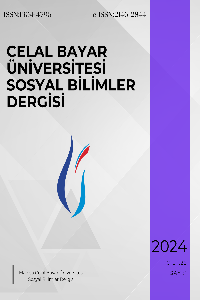“Süheyl ü Nev-Bahâr” Mesnevisinde Kahramanın Dönüşümü
The Transformation of the Hero in the Masnavi of “Süheyl ü Nev-Bahâr”
Author(s): Murat Keklik, Gamze İlkyazSubject(s): Philosophy, Studies of Literature, Theory of Literature, Sociology of Literature
Published by: Celal Bayar Üniversitesi Sosyal Bilimler Enstitüsü
Keywords: Süheyl ü Nev-Bahâr; Hero; Archetype; Monomite;
Summary/Abstract: In order to create a positive sense of self, a person has to establish a balance between conscious and unconscious. The unconscious is divided into two parts: collective and individual unconscious. The collective unconscious is the unchanging motifs that we carry in our soul since ancient times. The elements of the collective unconscious, which Jung calls "the first example, archetype", can be traced in literary products such as epics, fairy tales, myths and folk tales that have been told since ancient times. Joseph Campbell, based on Jung's archetypes, identified common patterns that repeat themselves in narratives. The hero goes through certain and stereotyped stages and difficulties. The hero who can overcome the difficulties completes his spiritual transformation and returns to where he started. Campbell defines the repeating patterns in the stories about the hero's journeys as "hero archetype, monomyth theory". According to this theory, the hero goes through three basic stages: "departure, maturation and return". The journey of heroes in Süheyl ü Nevbahâr masnavi, mother, supernatural power, self, false hero, old wise archetypes analyzed according to Campbell's monomyth theory; the concepts of threshold guard, persona, shadow, anima, animus were determined and explained in the study.
Journal: Celal Bayar Üniversitesi Sosyal Bilimler Dergisi
- Issue Year: 22/2024
- Issue No: 01
- Page Range: 15-34
- Page Count: 20
- Language: Turkish

